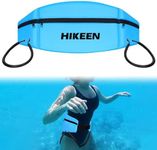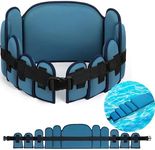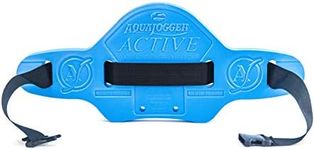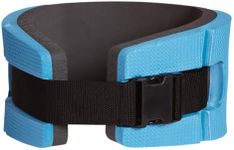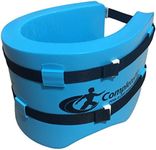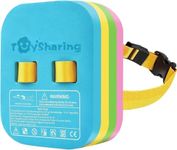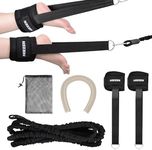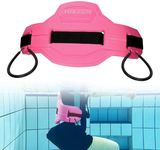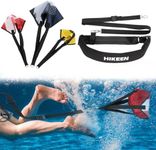Buying Guide for the Best Buoyancy Belts
Choosing the right buoyancy belt is essential for ensuring safety and comfort during water activities such as swimming, water aerobics, and rehabilitation exercises. A buoyancy belt helps to keep you afloat, allowing you to focus on your workout or therapy without worrying about staying above water. When selecting a buoyancy belt, it's important to consider several key specifications to find the best fit for your needs. Understanding these specifications will help you make an informed decision and ensure that you get the most out of your water activities.MaterialThe material of a buoyancy belt is crucial because it affects durability, comfort, and buoyancy. Common materials include foam and neoprene. Foam belts are lightweight and provide good buoyancy, making them ideal for general use. Neoprene belts are more durable and comfortable, often preferred for extended use or more intense activities. If you plan to use the belt frequently or for long periods, a neoprene belt might be the better choice. For occasional use, a foam belt should suffice.
Buoyancy LevelBuoyancy level refers to the amount of lift the belt provides in the water. This is important because it determines how well the belt will keep you afloat. Buoyancy levels can vary, with some belts offering minimal lift and others providing significant support. If you are a beginner or need extra support for rehabilitation, a belt with higher buoyancy is recommended. For more experienced swimmers or those looking for a more challenging workout, a belt with lower buoyancy might be suitable.
AdjustabilityAdjustability is important for ensuring a secure and comfortable fit. Most buoyancy belts come with adjustable straps or buckles that allow you to customize the fit to your body. A well-fitting belt will stay in place during your activities and provide consistent support. When choosing a belt, look for one with easy-to-use adjustment mechanisms and ensure that it can be adjusted to fit your waist size comfortably. This is especially important if multiple people will be using the belt.
Size and FitThe size and fit of a buoyancy belt are critical for comfort and effectiveness. Buoyancy belts come in various sizes, typically based on waist measurements. It's important to choose a belt that fits snugly but not too tightly. A belt that is too loose may shift during use, while one that is too tight can be uncomfortable and restrict movement. Measure your waist and refer to the manufacturer's sizing guide to find the right size for you. If you are between sizes, consider the adjustability features to ensure a proper fit.
Design and ShapeThe design and shape of a buoyancy belt can affect how it feels and performs in the water. Some belts are contoured to fit the natural curve of your lower back, providing additional support and comfort. Others have a more straightforward design. Consider how the belt's shape will interact with your body and the type of activities you plan to do. A contoured belt may be more comfortable for extended use or for those with back issues, while a simpler design might be sufficient for general use.
Weight CapacityWeight capacity refers to the maximum weight the buoyancy belt can support while still providing effective buoyancy. This is important to ensure that the belt will keep you afloat regardless of your body weight. Check the manufacturer's specifications for the weight capacity and choose a belt that can comfortably support your weight. If you are on the higher end of the weight range, opt for a belt with a higher capacity to ensure adequate buoyancy.

